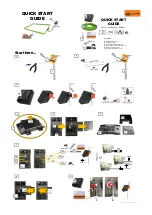
INTRODUCTION
INTENDED USER
1 - 2
WBPEEUI240754A0
®
INTENDED USER
This instruction is written for engineers, technicians and sys-
tem designers as a source of technical information on the
IMDSO15 digital output modules. This instruction should be
used by those planning to purchase, install, operate, trouble-
shoot, maintain or replace these modules. Those working with
the digital output module should have experience working with
and know the precautions to take around AC/DC power. A
knowledge of the INFI 90 OPEN system and electronic principles
is also required.
MODULE DESCRIPTION
The DSO module consists of a single printed circuit board
that occupies one slot in a module mounting unit (MMU). It
outputs eight separate signals switching electromechanical
relay changeover contacts. The electromechanical relays are
positioned on the printed circuit board.
Two captive screws on the front panel secure the module to the
MMU. The upper two front panel red and greed LEDs indicate
the module operating status. The front panel lower eight red
LEDs display the module relay states (active/non-active).
The DSO module has three card edge connectors for external
signals and power (P1, P2 and P3). P1 connects to logic power
(+5 VDC) that drives the module circuits. P2 connects the
module to the I/O expander bus to communicate with a con-
trol module. P3 is used to supply power (+24 VDC) to the
relays and to provide the relay contacts to the field devices.
The module interfaces with the field devices using a cable
connected to a termination unit (TU) or a termination mod-
ule (TM). The terminal blocks (physical connection points) for
field wiring are on the TU or TM.
INSTRUCTION CONTENT
This instruction is divided into eight sections and three appen-
dices. Read this instruction before installing or operating the
IMDSO15 digital output module. A summary of section con-
tent follows:
Contains a brief description, general usage information and
technical specifications.
Uses block diagrams and schematics to explain module opera-
tion and input circuitry.
Covers the preliminary steps to install the module and prepare
for operation. It covers address switch settings, mounting, wir-
ing connections, cabling and preoperational checks.











































